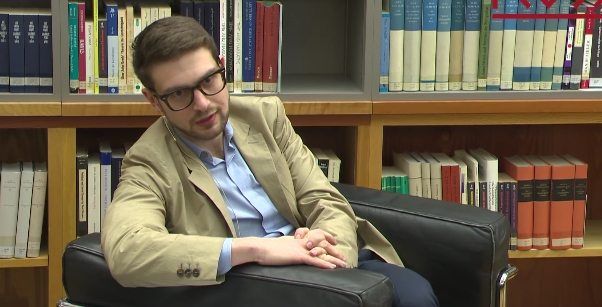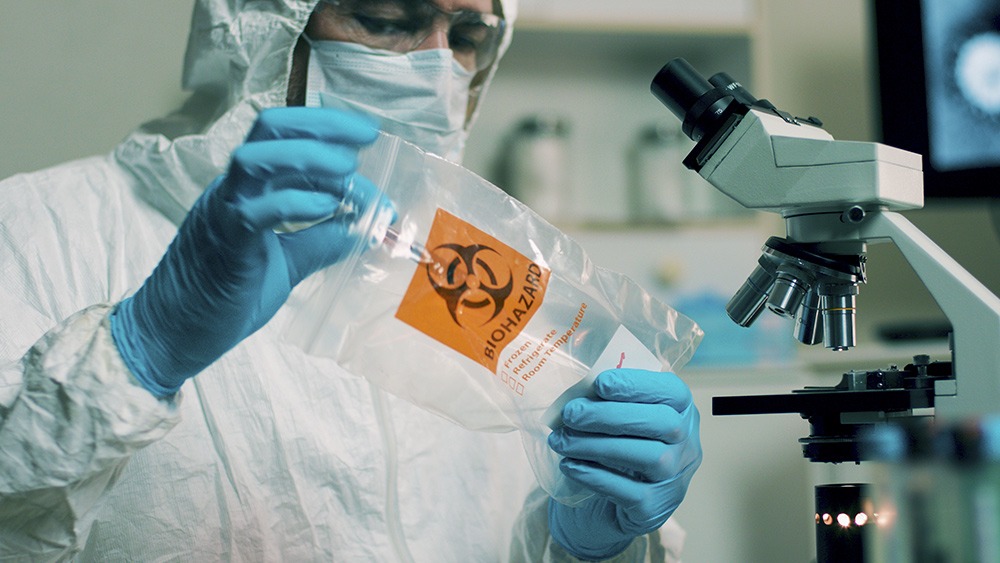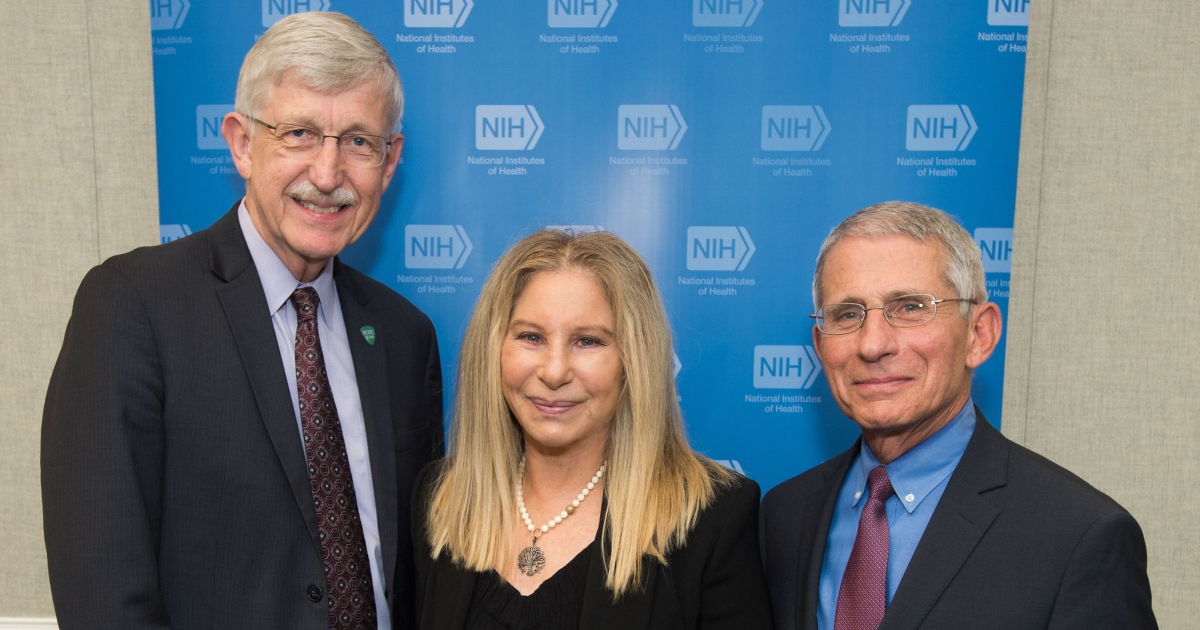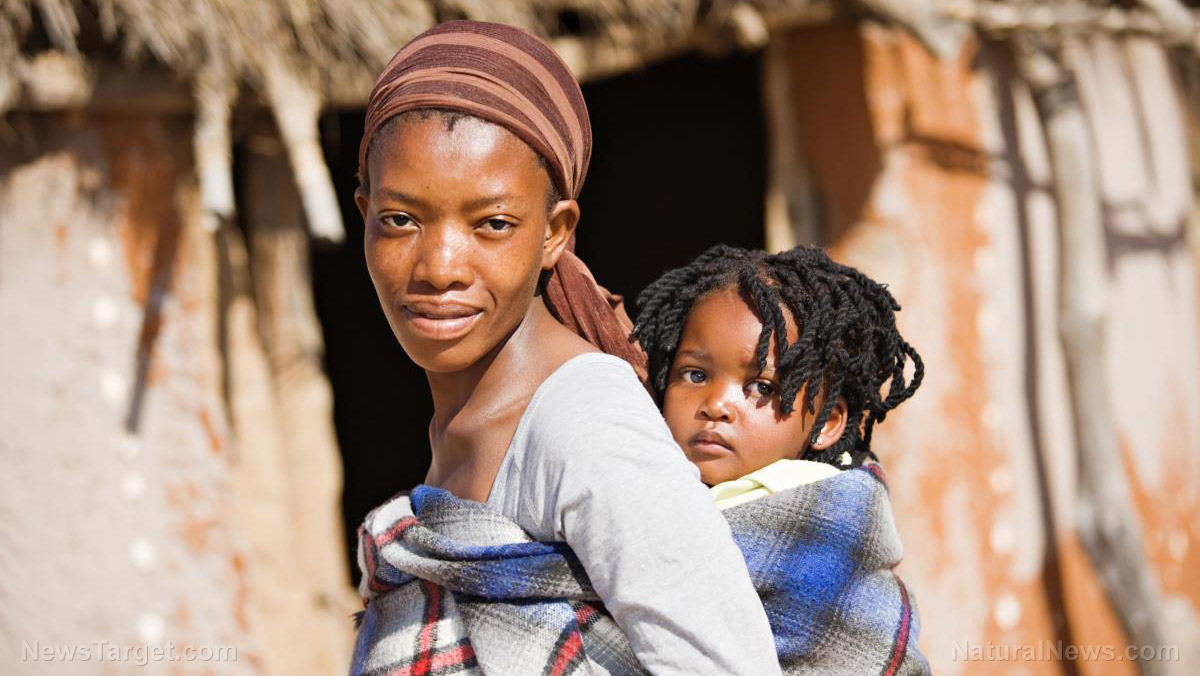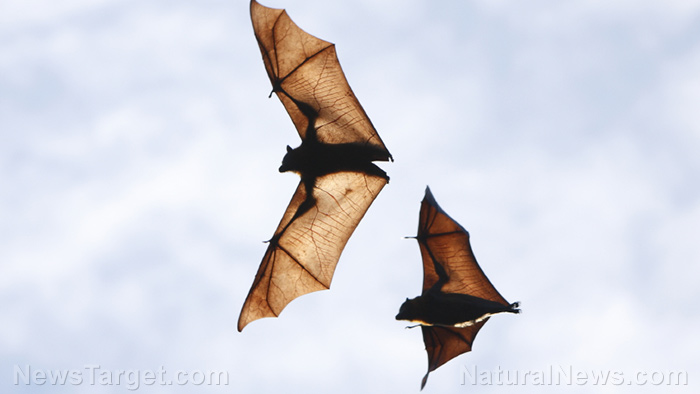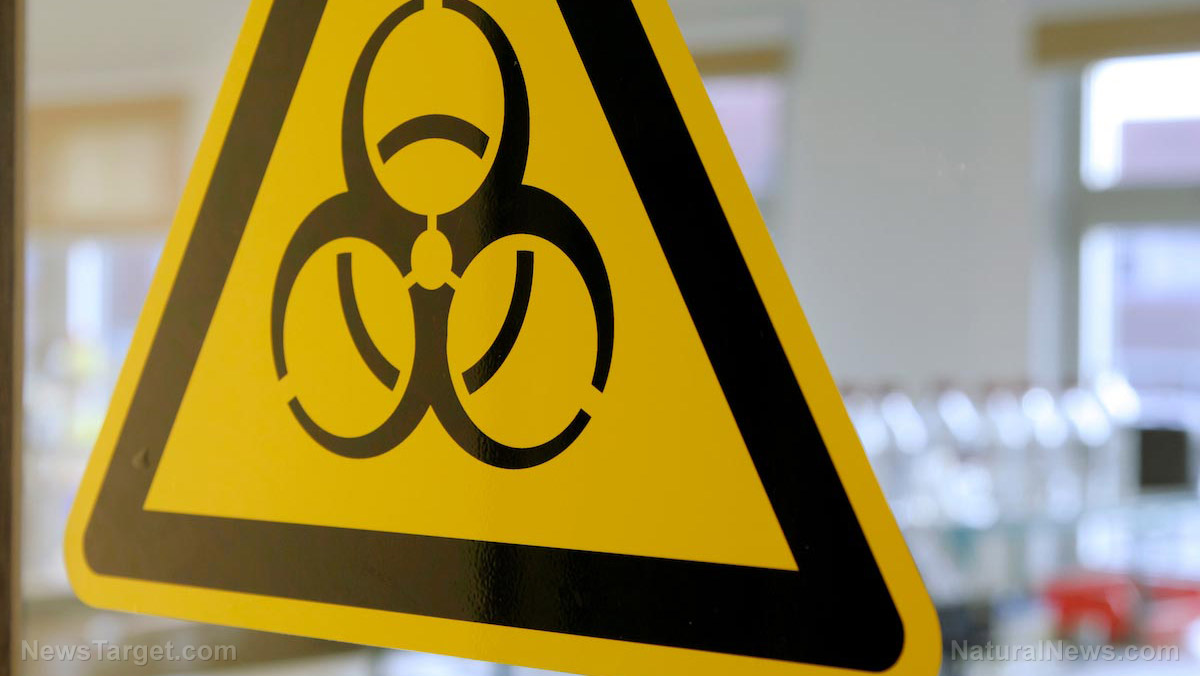‘Tip of the iceberg’: At least 309 infections and 16 escaped pathogens linked to lab accidents
01/11/2024 / By News Editors

Between 2000 and 2021 at least 16 pathogens reportedly escaped from research laboratories, according to a new study published in The Lancet Microbe — but the study authors said their findings may “only represent the tip of the iceberg” in terms of numbers due to a lack of standard reporting requirements.
(Article by Brenda Baletti, Ph.D. republished from ChildrensHealthDefense.org)
A team of researchers surveyed peer-reviewed articles and online reports in English, Chinese and German, looking for all indications that a pathogen accidentally “escaped” from a lab or that an infection was determined to be “laboratory-acquired” during the study period.
In addition to the 16 episodes of pathogenic “escape,” the researchers found 309 instances of lab-acquired infections caused by 51 different pathogens.
Seventy-seven percent of those infections were caused by bacterial pathogens, 13.9% were caused by viruses, 7.1% by parasites, 1.6% by fungi and less than 1% by a prion agent.
Eight of the cases were fatal, and six of those deaths were caused by bacteria, such as Yersinia pestis, which causes plague, or Neisseria meningitidis. One death was caused by Ebola virus.
The vast majority of infections occurred as an outcome of “procedural errors,” breaches of biosafety or risk mitigation procedures, which included using the wrong personal protective equipment, having inadequate training or mishandling samples.
Needlestick injuries, spills, splashes, open vials, animal bites or “unknown reasons” caused the remainder of the infections.
Most illnesses occurred in North America, Europe and Asia with the U.S. accounting for more than three-quarters of the infections. The majority of pathogen escapes were “internal,” meaning they were confined to the lab, but a few escaped into the broader community.

Laboratory-acquired infection case reports, including causal pathogens for each geographical region for the period from 2000 to 2021. Note that in 1 instance the geographic location of the LAI case was not stated. Credit: Stuart D. Blacksell et al.
Some of the more well-known examples of external escapes discussed in the report included a large-scale outbreak of Brucella in 2019, which leaked from a biopharmaceutical plant where the Chinese state produced animal brucellosis vaccines in Lanzou, China.
The factory had been using expired disinfectants and sanitizers, resulting in poor sanitization of the waste gas from its fermentation vats. The gas contained aerosolized Brucella, which the wind carried southeast toward the Veterinary Research Institute and nearby communities.
Initial brucellosis infections were identified at the research institute in November 2019 and the factory was shut down, but the spread could not be contained.
By November 2020, more than 10,000 people were infected with brucellosis, which causes fevers and muscular pain that can last from weeks to years.
In another highly-publicized incident of lab escape documented in the paper, a West Nile virus researcher — who had only 20 minutes of training in a P3 lab (or Biosafety Level 3, BSL3 lab) in Singapore — became infected in 2003 with the first SARS virus while working. The researcher exposed 84 contacts and risked reigniting the 2002-2004 SARS epidemic there, according to the Bulletin of the Atomic Scientists.
Another SARS lab escape happened in the Taiwan Military Institute of Preventative Research of the National Defence University, a P4 (BSL4) lab, in 2003. In this case, a researcher was careless in cleanup because “he was in a hurry,” and contracted SARS.
In an interview with The Defender, University of Illinois international law professor Francis Boyle, J.D., Ph.D., a bioweapons expert who drafted the Biological Weapons Anti-Terrorism Act of 1989, said:
“Generally speaking these lab leaks indicate that the respective labs are engaged in the research, development, testing and stockpiling of their respective offensive biological warfare weapons in violation of the Biological Weapons Convention and, here in the U.S., in violation of my Biological Weapons Anti-Terrorism Act of 1989.”
Boyle said that all BSL3 and BSL4 labs globally “must be shut down immediately before we have another COVID-19 pandemic.” He said he believes the pandemic originated as an offensive biological warfare weapon with gain-of-function properties that leaked out of the Wuhan BSL4, in cooperation with the University of North Carolina’s BSL3.
Robert F. Kennedy Jr.’s new book, “The Wuhan Cover-Up: And the Terrifying Bioweapons Arms Race,” provides “definitive proof in support of that proposition,” he added.
A brief history of high-profile lab infections and escapes
Lab-acquired infections were first recorded as early as 1915, the Bulletin of the Atomic Scientists reported, when a survey identified 47 infections largely occurring because researchers used their mouths to suck pathogenic material into pipettes.
But there also have been several likely or confirmed laboratory escapes of high-consequence pathogens resulting in transmission beyond laboratory personnel, according to medical historian Dr. Martin Furmanski.
For example, H1N1 swine influenza — which was considered to be extinct in 1957 — broke out at Fort Dix in New Jersey in 1976, resulting in 13 soldiers being hospitalized and one death. An effort was made to vaccinate all Americans against the virus, although the immunization program was halted after 25 people died from the vaccine and no pandemic broke out.
The human H1N1 virus appeared in the Russia and China in 1977. Researchers determined in 2010 that it had been a lab-released strain, likely from a lab attempting to make an attenuated H1N1 vaccine in response to the U.S. swine flu pandemic concerns.
H1N1 spread rapidly worldwide, although it affected only people under 20, according to Furmanski.
A leak in an anthrax production facility in Sverdlovsk, USSR, in 1979 caused the deaths of about 60 people, Dr. Meryl Nass reported on Substack.
Between 1963 and 1978 in the United Kingdom, there were 80 cases of smallpox and three deaths that were the results of three escapees from two different accredited research institutions.
In 1995, a severe outbreak of Venezuelan equine encephalitis, which was hypothesized to have come from a lab, infected 85,000 people in Venezuela and Colombia, killed 300, injured 3,000 and resulted in 10 miscarriages.
A foot-and-mouth disease outbreak in the U.K. in 2007 that led to the culling of nearly 2,000 cows began four kilometers from a BSL4 lab, Furmanski reported, and was found to be carried into the broader community in contaminated mud stuck on construction vehicles.
Journalist and historian Chernoh Bah, journalist Sam Husseini and virologist Jonathan Latham have also argued that substantial evidence indicates the 2014-2016 Ebola Outbreak in West Africa may also have come from a BSL4 lab leak, U.S. Right to Know reported.
Recently researchers hypothesized that the 2022 Monkeypox outbreak came from a lab.
And of course, the long controversy over the lab origins of COVID-19 has been raging for the last several years and is covered in detail in Kennedy’s book.
CDC labs have some of the ‘worst regulatory histories in the country’
In the U.S., the Centers for Disease Control and Prevention (CDC) and the U.S. Department of Agriculture (USDA) jointly administer the Federal Select Agent Program (FSAP), which is meant to regulate work with dangerous and deadly pathogens.
Facilities from the public and private sector that work with 68 select agents and toxins must register with FSAP to be monitored, primarily through self-reporting and agency site visits.
Its website includes an annual report, which, among other things, includes a list of reported thefts, losses (failure to account for) and releases (infections/escapes). The 2022 report, for example, reports no thefts, six losses and 170 releases.
Since the program was created in 2003, there have been no thefts, deaths or cases of illness in the general public caused by the reporting entities, according to the website. But their reports do indicate that many people in the labs have required medical treatment.
Nass, a bioterrorism and anthrax expert and member of the Children’s Health Defense (CHD) scientific advisory committee, told The Defender there was a high incentive for countries and labs to cover up any outbreaks because the costs of revealing an outbreak are high — countries lose investment or must spend a lot of money on remediation and labs can be shut down.
Nass also raised concerns to The Defender about the CDC as the regulatory agency, given that Freedom of Information Act (FOIA) requests showed the agency itself had its permits secretly suspended for serious safety violations while working with bioterror pathogens.
Its own labs have been referred six times since 2003 to the Office of the Inspector General at the U.S. Department of Health and Human Services, which handles enforcement actions for select agent violations.
Examples of CDC violations included high-profile safety incidents at the agency’s headquarters in Atlanta that involved anthrax, Ebola and a deadly strain of influenza in the mid-2010s
“The CDC’s facilities are among a small group of biolab operators that have the worst regulatory histories in the country, receiving repeated sanctions under federal regulations,” Alison Young at USA Today, who submitted the FOIAs, reported.
In the history of the Selective Agent Program, only five labs have been suspended and another five faced repeated referrals for enforcement, the CDC reported to Congress.
The CDC’s own labs were part of this very small group, yet that information was kept hidden.
“Why should CDC, who doesn’t seem to be able to get its act together on this, why should they be the ones collecting the information and dealing with the other agencies or labs?” Nass asked.
The authors of the Lancet study warned that the numbers of infections and escapes in their own study should be “interpreted with caution due to potential biases in voluntary reporting.”
“Without globalised formal reporting requirements, the data summarised here could only represent the tip of the iceberg,” they wrote.
They added that lab-acquired infections may be underreported because it can be difficult to discriminate between them and infections present in the community.
They also noted that while lab design, best practices and other regulations are important, the problem remains that most infections and escapes are the product of human error, and “should be carefully managed.”
NIH director doubles down on commitment to gain-of-function research
The Lancet Microbe study release, which coincides with global concern over the possible “lab leak” origin of COVID-19, has raised growing awareness about gain-of-function research and public concern about biosecurity issues, with calls to end risky gain-of-function research becoming increasingly common.
U.S. health agencies, particularly the National Institutes of Health (NIH) and its sub-agencies – like the National Institute of Allergy and Infectious Diseases (NIAID) — have come under intense scrutiny as research has revealed that since 9/11 they have directed massive funding into dangerous gain-of-function research both in and outside of the country.
During this period, a plan was put in motion “to transform NIAID, under the direction of Dr. Anthony Fauci, into a de facto Defense Department agency,” Kennedy detailed in “The Wuhan Cover-Up.”
Yet, U.S. health officials have continually downplayed risks associated with gain-of-function research.
Dr. Monica M. Bertagnolli, the new director of the NIH — the position formerly held by Dr. Francis Collins — recently told The New York Times she had no plans to change course on funding gain-of-function research.
Responding to a reporter’s question about whether, given concerns raised by experts about the risky research, she planned to make any changes in NIH’s strategy, she said:
“The gain-of-function research that you’re specifically referring to is modifications that are done of potential pandemic pathogens, right? What if we can develop a vaccine way before we ever have to see a new virus that’s going to be another Covid-19 virus? That would be a huge benefit.
“But if we’re going to do that kind of research, we have to make sure that the risks are absolutely minimized and always be mindful that the benefits justify the risks.”
Boyle told The Defender this response was the “standard propaganda for these death scientists.”
He added:
“We all know that gain-of-function is a euphemism for offensive biological warfare weapons work, like Covid-19. All gain of function must be terminated.
“She made it clear that NIH will go full steam ahead on gain-of-function. The alleged pretext she uses is that we could use a vaccine against the next Covid-19, which is offensive biowarfare work with gain-of-function that leaked out of the Wuhan BSL4 — China’s Fort Detrick — in cooperation with UNC’s BSL3.”
The whole framework of her argument is deceptive, Boyle said, because “They use gain-of-function to develop the offensive biological warfare weapon in the first place, then reverse engineer it to develop a ‘vaccine’ in the event of blowback.”
“Then in theory they can use the weapon,” he added. “But the death scientists say they are doing this in order to develop the ‘vaccine.’”
Furmanski called this phenomenon a “self-fulfilling prophecy,” where laboratories were allegedly working with pathogens to prevent the very outbreaks they ultimately caused.
Read more at: ChildrensHealthDefense.org
Submit a correction >>
Tagged Under:
bacteria, current events, health, infectious disease, lies, propaganda, virus
This article may contain statements that reflect the opinion of the author
RECENT NEWS & ARTICLES
COPYRIGHT © 2017 BiologicalWarfare.com
All content posted on this site is protected under Free Speech. BiologicalWarfare.com is not responsible for content written by contributing authors. The information on this site is provided for educational and entertainment purposes only. It is not intended as a substitute for professional advice of any kind. BiologicalWarfare.com assumes no responsibility for the use or misuse of this material. All trademarks, registered trademarks and service marks mentioned on this site are the property of their respective owners.








